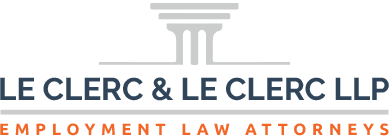A recent survey found that up to 91% of US workers have experienced workplace discrimination. Just 9% of employees did not report discriminatory behavior from employers or colleagues because of their race, gender, religion, or other identifying characteristics.
The survey, run by the major hiring website Monster, explored a wide range of topics related to discrimination in the workplace, including the types of bias harming people, when this bias is most commonly experienced, and how many people are willing to report discriminatory behavior to their employer.
The results were largely negative. 50% of all surveyed workers reported having experienced ageism while applying for jobs, while 40% reported racism. Other reported issues included gender, disability, and religion-based discrimination.
This is despite strong laws in the US intended to allow workers to fight against discriminatory workplaces. The struggle is that most respondents do not feel comfortable reporting this behavior to their employers.
The survey found that just 44% of people were comfortable reporting discrimination to an anonymous reporting source if their employer provided it. That number drops even further once they can no longer be anonymous. Only 33% of people would feel comfortable making a report to HR about something they had experienced or witnessed, and just 21% felt comfortable reporting it directly to a manager.
There appear to be two factors contributing to this discomfort with making reports. First, many people worry that reporting abuse will make them a bigger target. Second, people are not always clear on what behavior constitutes unlawful discrimination.
The best way to protect yourself against abusive and discriminatory behavior at work is to be confident you can recognize it. Below, we discuss what constitutes workplace discrimination, how to identify it, and what you can do once you’re spotted it.
Definition of Workplace Discrimination
As defined by the US Equal Employment Opportunity Commission (EEOC), discrimination is treating someone differently or less favorably for some reason. This can include harassing and treating you unfairly, denying reasonable requests, asking invasive questions, or retaliating against you for doing the right thing.
People discriminate for many reasons, but US employment law focuses on protected categories. These include:
- Race
- Color
- Religion
- Sex, gender identity, sexual orientation, and pregnancy
- National origin
- Disability
- Age
- Genetic information
Under laws like the Civil Rights Act and the Americans with Disabilities Act, all residents have the right to freedom from discrimination in the workplace due to these characteristics. Furthermore, the law protects workers from discriminatory or retaliatory action because they participated in protected activity like requesting or taking time off under the Family and Medical Leave Act (FMLA).
Subtle Signs of Workplace Discrimination
Good studies about the prevalence of discriminatory behavior rarely ask, “Do you think you’ve faced workplace discrimination?” Instead, they ask respondents about specific types of behavior or treatment without mentioning abuse or discrimination. This approach is because most people are unaware of how much supposedly normal behavior constitutes abuse.
There are many subtle and lesser-known types of workplace abuse, harassment, and bias that may constitute discrimination. Some of the most common include:
Unequal Treatment and Opportunities
Some people consider talking about your pay or performance reviews rude, and many employers discourage it. However, this can make it hard to identify the most common type of discrimination: unequal treatment. Talking about these matters is crucial to determining if you are treated fairly. If a company routinely offers white or male workers more money than other people with similar performance records, they are discriminating.
The same goes for growth and promotion prospects. If the company routinely grooms certain types of people for leadership positions but doesn’t offer others the same opportunities, it discriminates against them.
Microaggressions and Biased Language
Microaggressions are minor instances of bias that can add up over time. One of the most common types of microaggression is biased language, such as texts that assume all employees are men or dress code policies that fail to account for religious apparel or Black protective hair styles.
They can also extend into stereotyping, offensive remarks, insensitive questions, and failing to respect your bodily autonomy. For example, jokes about a person’s accent, education, gender, or race are often microaggressions. So is touching a pregnant person’s stomach or a Muslim woman’s hijab without permission. Even if they are “just” jokes, if these behaviors continue after you ask them to change, they are a form of discrimination.
Isolation and Exclusion
Discrimination is often missed when it looks like exclusion. Your exclusion could be discriminatory if you aren’t invited to important planning meetings, social gatherings, or networking events. It may constitute barring you from equal opportunities, which is explicitly unlawful.
Ostracism and isolation may also be discriminatory. If your colleagues or manager fails to include you in email threads, talk over you, or generally ignore your contributions in favor of people with other characteristics, you may face discrimination.
Legal Recourse and Remedies for Workplace Discrimination
Subtler examples of discriminatory behavior can be easy to miss. However, once you spot them, you have options. The first step is to notify your HR department or management about what you’re experiencing. Ideally, this will resolve the issue. If it doesn’t, or if you face retaliation for reporting the behavior, it’s time to get help.At Le Clerc & Le Clerc LLP, we are there for you. We have years of experience helping California victims of workplace discrimination hold their workplaces accountable for the harm they suffered. We can help you file reports with the EEOC or the California Civil Rights Department. Our expert workplace discrimination attorneys will help you negotiate a settlement or represent you in court. Learn more about how our firm can support you by scheduling your consultation today.
